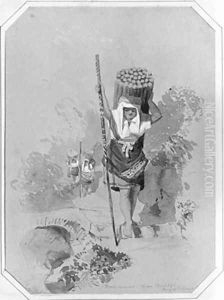George Snell Paintings
George Snell was an American painter, not to be confused with George D. Snell, the immunologist who won the Nobel Prize. Born in Richmond, Indiana, in 1899, George Snell was a notable figure in the American art scene, particularly known for his contributions to the Regionalist art movement, which emphasized realistic and naturalistic depictions of rural American life during the early to mid-20th century.
Snell's art education began at the School of the Museum of Fine Arts in Boston, where he honed his skills and developed his unique style. His early works were influenced by his surroundings and depicted the American landscape and scenes of everyday life. He was part of a generation of artists who sought to create an art that was distinctly American, at a time when the country was forging its cultural identity separate from European influences.
Throughout his career, George Snell participated in numerous exhibitions and was the recipient of several awards. His works were appreciated for their vivid portrayal of American life and the beauty of the American landscape, with a focus on capturing the light and atmosphere of his subjects. Snell's paintings often featured rural settings, small towns, and the lives of ordinary people, thus contributing to the narrative of American Regionalism in art.
Despite his contributions to American art, George Snell has not achieved the same level of recognition as some of his contemporaries, such as Grant Wood or Thomas Hart Benton. Nonetheless, his work is considered an important part of the American Regionalist movement and is held in several collections and museums across the United States.
George Snell's legacy as an artist lies in his commitment to capturing the essence of America through his paintings. He continued to paint and exhibit his work until his death in 1965. Today, he is remembered as a skilled painter who contributed to the visual representation of America's heartland and its people during a significant period in the nation's history.
